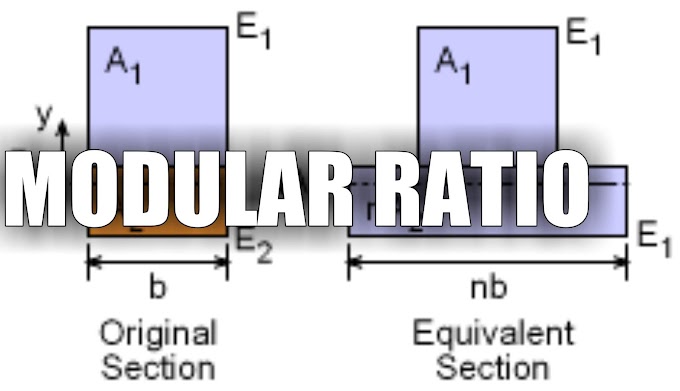Ther are basically six important properties of hardened concrete that are taken into consideration while designing for any concrete structure. These are discussed below.
Compressive Strength
The compressive strength of concrete is specified by a term called characteristics compressive strength which is defined as the strength of concrete below which not more than 5% of the test results are expected to fall. To achieve this characteristic strength concrete mix are to be designed for the target strength as per IS: 456. The target strength is computed using the following formula.
Target strength = Characteristics compressive strength + (1.65 x standard deviation)
M20 is specified as the minimum grade of concrete for use in RCC work as per IS:456, 2000. That means the characteristics of compressive strength should have a minimum value of 20 MPa.
Tensile Strength
The tensile strength of concrete is also called the flexural strength of concrete. This is measured by the three-point loading test. The tensile strength can also be computed indirectly from characteristics compressive strength using an empirical relation given in IS: 456.
Flexural strength (fcr) = 0.7√fck MPa
Where fck is the characteristic compressive strength in MPa.
Modulus of Elasticity
The modulus of elasticity of concrete depends upon three main factors given below.
- Type of cement
- Type of the aggregate
- Mix proportions
Modulus of elasticity is required for calculation of the deflection of concrete structures. Deflection is one important limit state of serviceability. The short term modulus of elasticity of concrete can also be computed from characteristic compressive strength by using an empirical relation given in IS: 456-2000 is given below.
Ec=5000√fck Mpa
Where fck is the characteristic compressive strength in MPa.
Creep
It is an inelastic, time-dependent strain developed in concrete members under sustained loading. Creep of concrete mostly depends upon the five following factors.
- Cement content,
- W/C ratio,
- Temperature and humidity,
- Size of the structural element,
- Type of loading,
- Period of loading.
In the absence of experimental data, the creep coefficient can be computed as the ratio of ultimate creep strain to the elastic strain at various ages of loading as per IS: 456-2000 are summarized below.
Creep Coefficient:
7 days-2.2
28 days-1.6
1 year-1.1
Creep Coefficient:
7 days-2.2
28 days-1.6
1 year-1.1
The creep coefficient values are useful in the determination of time-dependent deflections of concrete members. A higher creep coefficient refers to larger deflections.
Shrinkage
The volumetric changes of concrete structures due to the loss of moisture by evaporation is known as shrinkage. It is a time-dependent deformation of concrete occurs without the impact of external forces. The total amount of shrinkage in concrete is decided by ingredients of concrete and environmental conditions like temperature and humidity. As per IS: 456-2000 total shrinkage strain as 0.0003. Shrinkage of concrete results in surface cracks.
Coefficient of Thermal Expansion
The coefficient of thermal expansion depends mainly on the type of aggregate used in concrete. It is used in the design of structures like water tanks, chimneys, silos, etc. The values of the coefficient of thermal expansion given in IS:456-2000 are given in the following table.
Coefficient of Thermal Expansion:
Quartzite-1.2 to 1.3 x 10-5
Sandstone-0.9 to 1.2 x 10-5
Granite-0.7 to 0.95 x 10-5
Coefficient of Thermal Expansion:
Quartzite-1.2 to 1.3 x 10-5
Sandstone-0.9 to 1.2 x 10-5
Granite-0.7 to 0.95 x 10-5
Basalt-0.8 to 0.95 x 10-5
Limestone-0.6 to 0.9 x 10-5






0 Comments